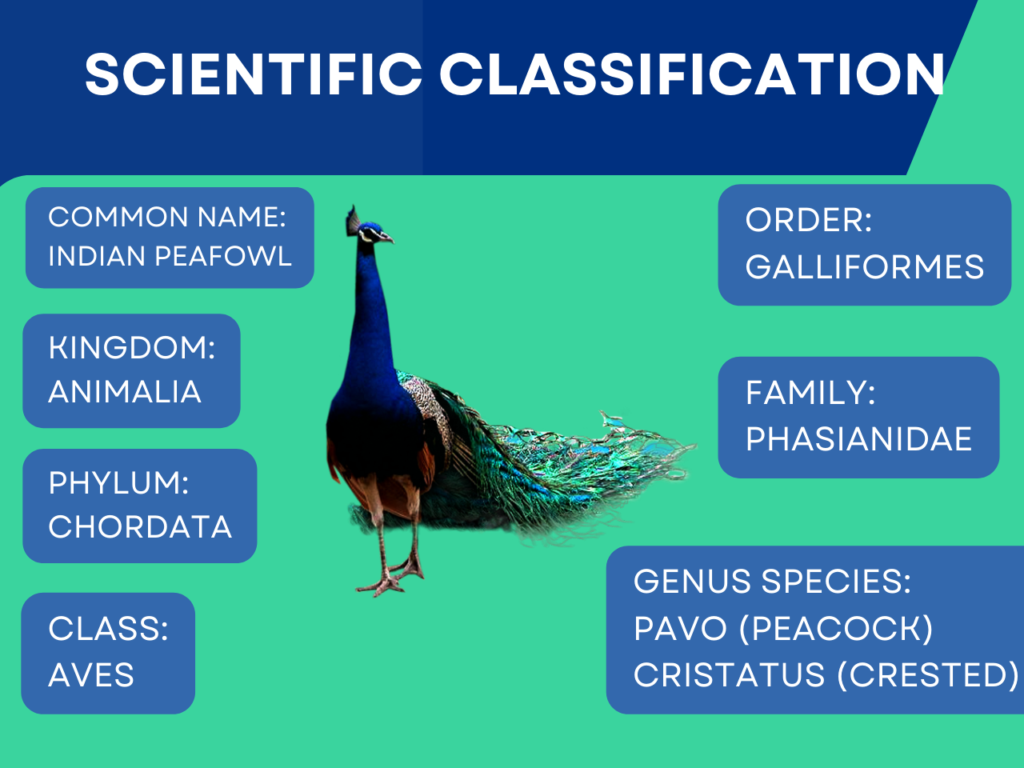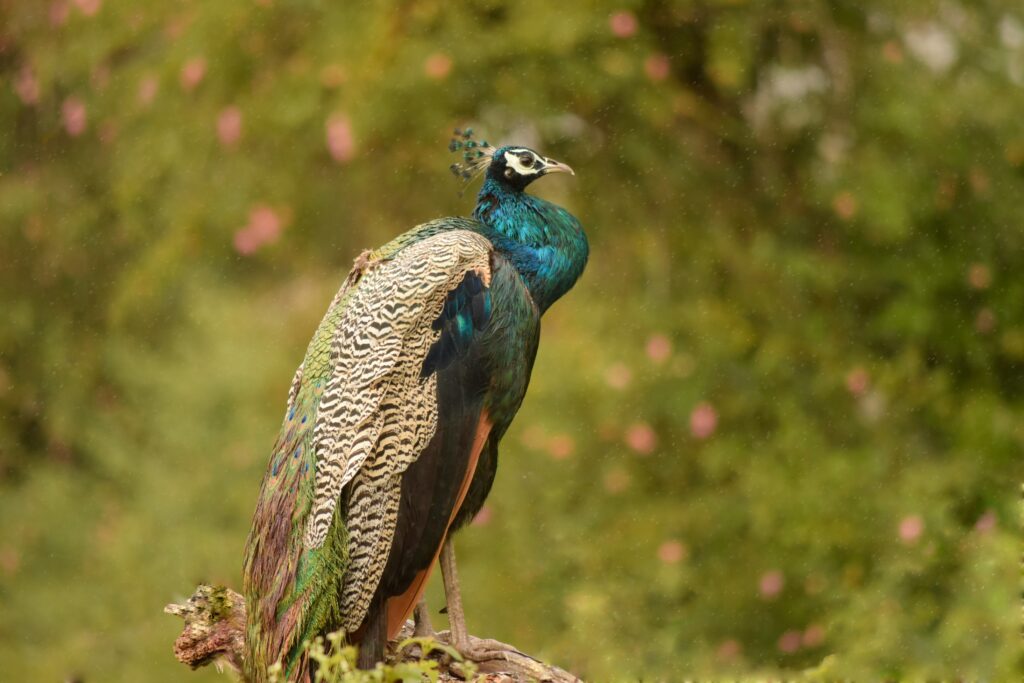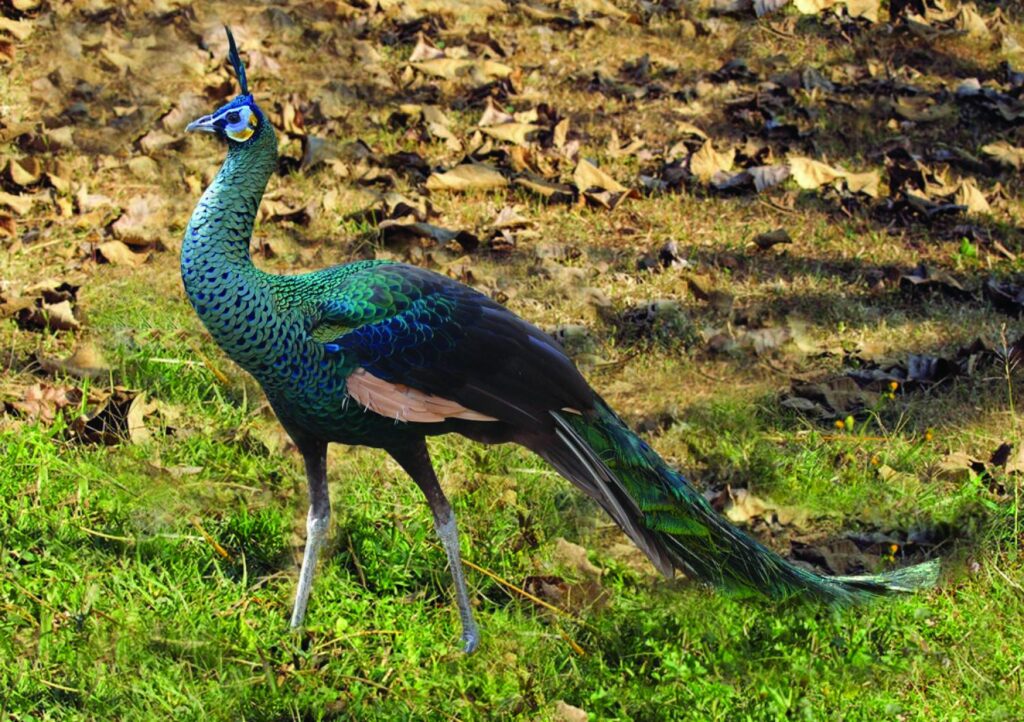The Indian peafowl is the most popular of the three species of peafowl found worldwide. Although you’ve probably seen peafowl at our neighborhood zoo, there’s more to know about these magnificent birds.

Indian peafowl
The most prevalent and recognizable species are Indian peafowls. Female peahens have considerably smaller tails with a more muted brown coloration, whilst male peacocks have enormous tails with stunning blue and green colors. Though originally from Southeast Asia, Indian peafowl are now shipped to zoos and farms all over the world.

Native American peafowl breeders are now widely dispersed over North America. Even though these birds are a lot of pleasure to watch, you might want to reconsider having one on your farm because they are rather noisy. If you do, though, they are quite obedient and simple to feed due to their omnivorous diet.
What is an Indian Peacock?
To start, a little terminology: the species is known as Indian peafowl, and the males are called Indian peacocks, while the females are called Indian peahens.
The enormous tails of male Indian peacocks, adorned with exquisite green and blue feathers, glisten with an iridescent blue neck. The hue of Indian peahens is pale brown. Their tails are neither green nor blue, and they are rather small.

CHARACTERISTICS of Indian Peacocks
Description
- You can tell an Indian peacock is a remarkable bird even before you see it flaunting its tail feathers. Then, as they spread out, it’s just amazing to see.
- Female peahens, on the other hand, lack the same show and are a pale brown hue with nearly no tail.
Apart from their well-known colors, peafowl are also recognized for their vocalizations. They produce a wide range of noises, such as shrieking and honking. - Because there are numerous predators, Indian peafowl use calls to warn other birds of possible threats. They will also create a lot of noise from early spring to late summer during the mating season.
Size
Peacocks and peahens have bodies that are quite comparable in size when measured. But when you consider their tails, you will notice a significant difference in size.
The tails of peacocks may grow up to five feet long. Peahens’ tails, on the other hand, are just 4 to 6 inches long.
Diet
Since Indian peafowls consume both meat and vegetables, they are omnivores. It is a forager and will eat nearly anything that it comes into contact with.
This applies to plants, such as berries and grass. When it comes to meat, peafowl adore invertebrates like beetles and worms. Additionally, they will consume bigger creatures like snakes and mice.
Because of this, peafowl require a sizable environment in order to allow them to roam about and obtain more food. If you intend to raise peafowl, make sure you provide them with both your feeding and an area where they may forage for food on their own.
If someone wants to keep peafowl, they can actually feed them kitchen leftovers, which makes them a low-maintenance pet.

Population
Because they are legally protected in India, Indian peafowl are a flourishing species. This is in contrast to other endangered species, such as the Congo and Green peafowls.
The precise number of peafowls is difficult to estimate, however they are thought to number around 100,000 in India. The fact that Indian peafowl are kept in zoos all over the world contributes to the increase in their number.
Lifespan
Indian peafowl live for an average of twenty years. For a bird, this is rather lengthy, and many farmers will keep peafowl as pets.
WEIGHT
Although peahens weigh less than peacocks, peacocks typically weigh between nine and thirteen pounds. Considering all the feathers that peacocks have, this is really astonishing.
SIZE AND INCUBATION OF CLUTCH
For a period of 12 days, a peahen may lay one egg roughly every one to two days. It will lay a clutch of five to eight eggs during this period.
The peahen will gather all of the eggs that have been deposited in her nest and sit on them to begin the incubation process. The eggs will hatch in around 28 days, and the resulting offspring are known as peachicks.
Peachicks spend eight to ten weeks living with their mother. Even if they don’t start having sex until they are three years old, they are completely independent after that.
Habitat
Native to India and its environs, which includes Sri Lanka and other parts of Southeast Asia, are Indian peacocks. But since their discovery, peacocks have spread over most of the world.
However, peacocks require warm conditions in order to survive. They cannot adjust if the temperature regularly drops below freezing.
Peacocks are incredibly magnificent animals to see, and you can find them in almost any zoo or wildlife sanctuary. It’s interesting to note that wild peacocks may be found in tiny areas across North America. This happens when either peacocks escape from their cages or when their owners keep them as exotic pets and then let them go when they get too big or noisy.
There are pockets of peacocks and peahens in the warmer regions of the United States and Canada. Particularly in Mexico, there is a sizable wild population.

Facts
- The Indian peafowl is the country’s national bird and is revered in both Hindu and Greek mythology.
- Some claim that Alexander the Great brought the peafowl to Europe, while others assert that the bird arrived in Athens by 450 BCE and may have arrived much earlier.
- Among the biggest and heaviest members of the pheasant family are Indian peafowl.
- The most notable feature of peafowls is their males’ showy feather display, which is mistaken for a tail even though the feathers really sprout from their backs. Actually, the extremely extended top tail coverts make up the “train”. Like in the female, the tail is short and brown. The feathers’ microstructure produces the hues rather than any green or blue pigments. The male’s tarsal spurs and long train feathers do not grow until after the second year of life. Birds older than four years old have fully formed trains.
- The tail of an Indian peafowl has just 20 feathers, but its “train” includes more than 200 feathers, almost all of which terminate in a complex eye spot.
- Indian peafowl are easily identified by their loud cries, which in forest regions frequently signal the arrival of a predator like a tiger.
- Buddhism views the peacock as a symbol of knowledge. Peacock feathers are utilized in several rituals and decorations, and peacock themes may be seen in many contemporary works of art and household objects as well as in Indian temple architecture, antique coins, and textiles.
- A man who is highly proud or who pays great attention to his attire is sometimes referred to as a “peacock” in English.
Conclusion
The Indian Peafowl, with its stunning plumage and rich symbolism, remains a captivating species that fascinates both nature enthusiasts and mythological scholars alike. From their vibrant presence in Hindu and Greek mythology to their role as India’s national bird, Indian peafowls hold a special place in cultural and ecological landscapes.
Despite their beauty, they pose challenges as pets due to their noisy nature and specific habitat requirements. Understanding their characteristics, habitat, diet, and breeding habits sheds light on the importance of conservation efforts to preserve their natural habitats and populations. Whether admired in the wild or at zoos, the Indian Peafowl continues to enchant observers worldwide, symbolizing beauty, knowledge, and the intricate balance of nature.
